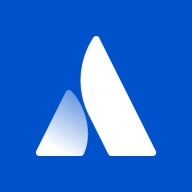


Find out what your peers are saying about Atlassian, monday.com, Microsoft and others in Project Management Software.
However, due to its pricing, I need to be careful about adding each user and feature.
Microsoft Project provides significant return on investment through time savings, enhanced visibility, real-time reporting, and risk mitigation for projects.
The technical support is of high quality.
I did not face any issues with stability or upgrades.
Their support tends to decline when not supporting cloud solutions.
It's challenging to navigate, often making it necessary to search for solutions externally.
Help forums and online resources like YouTube are helpful.
Microsoft Project Server is fully scalable and is widely used in many industries.
The desktop version does not have scalability.
Asana is quite stable; it is a tool I can trust.
I have never had to reach out to their support because the product works as expected.
It would be easier if I could assign tasks directly from my email without needing to open Asana.
It would be beneficial to have a native option for Asana to create tickets so we could move away from our main ticketing tool.
To improve Jira, maybe some AI features could be added.
Exporting data from Microsoft Project, especially Gantt charts, is overly complex and not user-friendly.
The lack of collaboration capabilities on the desktop version, unlike the cloud version, is a limitation.
Microsoft has become increasingly expensive, and there seems to be a push towards cloud solutions which can be challenging for some.
To add one user is expensive, which makes me cautious about upgrading or adding more users.
Microsoft Project Server is on the expensive side due to high licensing costs.
Microsoft's products are expensive for individuals.
Considering the infrastructure commitments to SharePoint and SQL, the implementation costs are low if already set up.
Asana's automation allows me to automate deadlines and send notifications to the right people about approaching deadlines.
The easy way to get all the analytics at the end of the month or year is the most important feature, and that's why we are still with Asana.
This setup allows for comprehensive reporting and management across multiple projects and portfolios.
The dashboards are amazing for data crunching and provide a project focus with upcoming predictions, including burn-up and burn-down charts.
The Gantt chart is also a very powerful tool for a visual presentation of sequences, critical paths, and execution processes, which simplifies comprehension for users.
| Product | Market Share (%) |
|---|---|
| Asana | 4.7% |
| monday.com for Enterprise | 8.1% |
| Jira | 7.6% |
| Other | 79.6% |
| Product | Market Share (%) |
|---|---|
| Jira | 17.7% |
| Microsoft Azure DevOps | 13.0% |
| Codebeamer | 8.9% |
| Other | 60.4% |
| Product | Market Share (%) |
|---|---|
| Microsoft Project Server | 5.1% |
| ServiceNow Strategic Portfolio Management | 9.9% |
| Planisware | 9.6% |
| Other | 75.4% |



| Company Size | Count |
|---|---|
| Small Business | 38 |
| Midsize Enterprise | 7 |
| Large Enterprise | 6 |
| Company Size | Count |
|---|---|
| Small Business | 103 |
| Midsize Enterprise | 56 |
| Large Enterprise | 149 |
| Company Size | Count |
|---|---|
| Small Business | 25 |
| Midsize Enterprise | 12 |
| Large Enterprise | 33 |
Asana is web-based software-as-a-service that helps teams coordinate and manage their work. It helps companies move faster by making sure everyone knows the team’s plan and process and who is doing what by when.
Each user can create projects using a list, board, calendar, or timeline view. Within each project, users can add tasks, subtasks, sections, comments, attachments, start and due dates, and custom fields. Project and task followers get notifications on changes or comments on the project and/or task in their Inbox. Individual users can see all of the tasks they're responsible for across all of their projects in a view called My Tasks.
Asana is available in English, French, Spanish, German, and Portuguese.
Jira is a powerful cloud- and subscription-based application lifecycle and issue management solution. It is designed to aid users both in project management and in resolving any issues that arise at any point in the software development process. It is especially concerned with easing the ability of developers to collaborate.
Jira Benefits
Some of the ways that organizations can benefit by choosing to deploy Jira include:
Jira Features
Real-time notification feature. Users can set Jira so that it offers them notifications that contain critical information in real time. It can send users email notifications when pressing issues have been updated. They can also set it to notify them about tasks that may be due, or other similar events.
Reviews from Real Users
Jira is a powerful solution that stands out when compared to many of its competitors. Two major advantages it offers are its workflow engine and its highly customizable dashboard.
Bharath R., the tool implementation and project management lead at a financial services firm, writes, “I feel the strongest feature of Jira is its workflow engine. It empowers us to automate our workflows within our organization. It's the one characteristic of Jira which I think can help any organization, be it in any domain.”
Uday J., a staff engineer at a computer company, says, “Another thing that I like a lot about Jira is that in the dashboard, you can plug the modules that you want. You can enable certain sections. For example, you can show trend history, open Jira tickets, etc. Some of the managers have created a dashboard for each engineer.”
Microsoft Project Server facilitates project portfolio management and everyday collaboration, enhancing decision-making processes. Its integration with SharePoint offers a flexible solution for enterprise project management, catering to complex project needs seamlessly.
Microsoft Project Server empowers project teams and managers with enhanced communication and comprehensive project visibility. It supports dynamic resource allocation, financial tracking, and risk assessment. A cloud-ready platform, it simplifies deployment and scalability, suitable for diverse project environments and needs robust integration with leading productivity tools and services.
What are the key features of Microsoft Project Server?Industries such as construction, IT services, and pharmaceuticals leverage Microsoft Project Server for managing large-scale projects with precision. Its adaptability to different industry standards ensures specific project requirements are met while maintaining operational control and regulatory compliance.